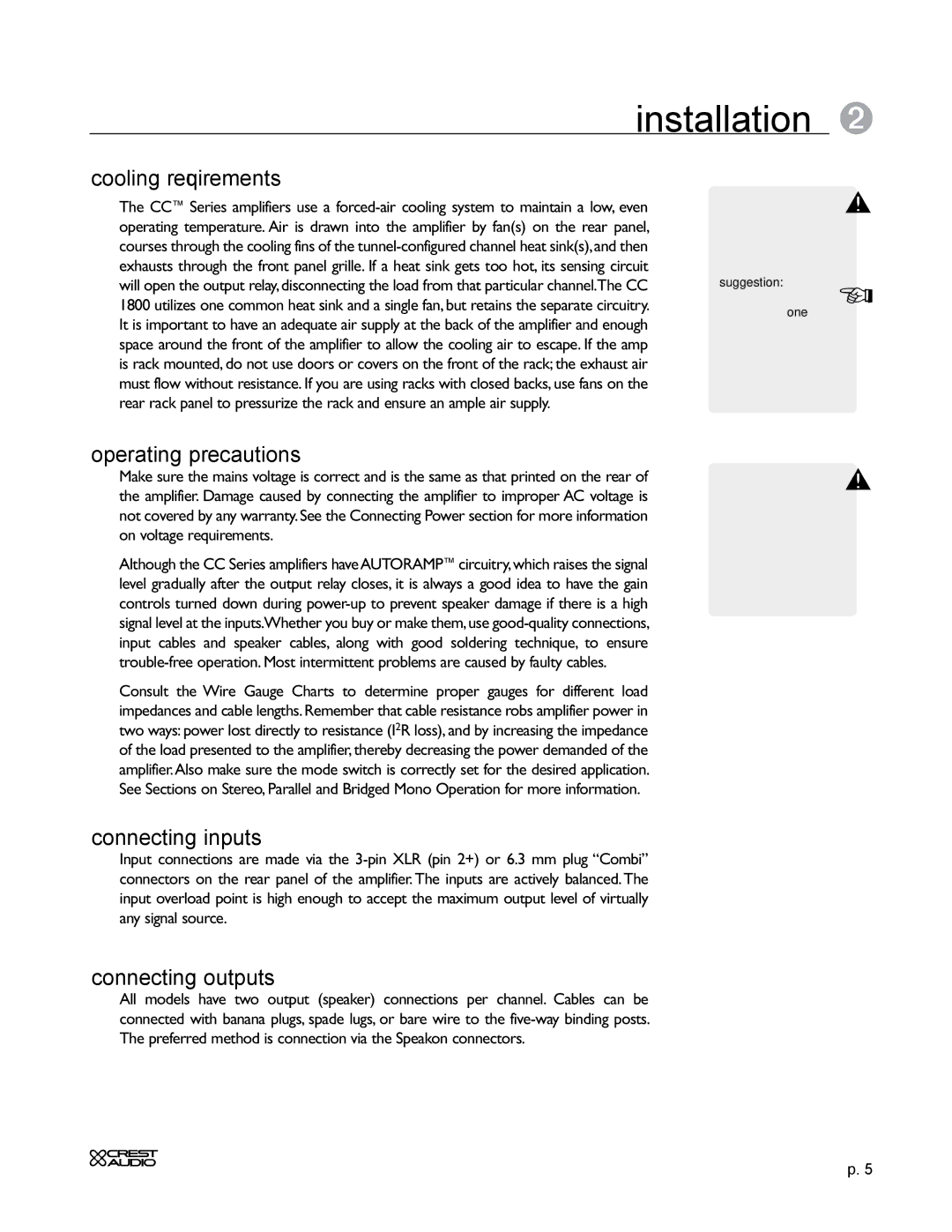CC 1800, CC 4000, CC 2800, CC 5500 specifications
Crest Audio is renowned for its high-performance amplifiers, and the CC series stands out as a testament to the brand's commitment to quality and innovation in professional audio. The CC 1800, CC 5500, CC 2800, and CC 4000 models each bring unique features and technologies designed for various applications in live sound and installations.The Crest Audio CC 1800 is a powerful workhorse, delivering 900 watts per channel at 4 ohms. It features a robust power supply and high-quality output devices, ensuring excellent performance and reliability. The CC 1800 is equipped with comprehensive protection circuitry to safeguard against overheating and short circuits, enhancing its durability in demanding environments. Its lightweight design combined with a compact chassis allows for easy transport and setup, making it a favorite among sound professionals.
Next in the lineup, the CC 5500 steps up with an impressive output of 1,300 watts per channel at 4 ohms. This amplifier is engineered for high efficiency and low distortion, making it ideal for driving large speaker systems in concert applications. The CC 5500 incorporates a sophisticated thermal management system, allowing it to operate at maximum capacity without compromising audio fidelity. Additionally, its versatile input options make it compatible with various sound systems, enhancing its utility across different setups.
The CC 2800 is designed for versatility, offering a balanced output of 1,000 watts per channel at 4 ohms. It features advanced circuitry that maximizes headroom and minimizes noise, ensuring clear, powerful sound reproduction in any setting. The CC 2800 also includes an integrated limiter system to prevent signal clipping, preserving audio integrity during high-energy performances. With its rugged build and quality components, this model is perfect for touring professionals and fixed installations alike.
Finalizing the series, the CC 4000 is a powerhouse, producing an extraordinary 1,500 watts per channel at 4 ohms. Its advanced design incorporates an innovative feedback topology that allows for exceptional transient response and low distortion levels. The CC 4000’s durable construction ensures reliability over time, even during extensive use. It also offers multiple outputs and detailed monitoring capabilities, making it a top choice for larger venues and more extensive audio setups.
In summary, the Crest Audio CC series — CC 1800, CC 5500, CC 2800, and CC 4000 — represents a range of amplifiers with advanced technologies, robust construction, and high performance. Each model is tailored to meet the specific needs of audio professionals looking for reliability and superior sound quality in various applications.

